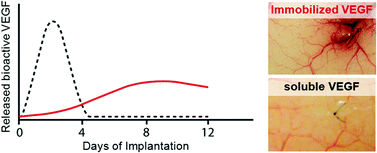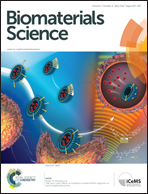Long-term biostability and bioactivity of “fibrin linked” VEGF121in vitro and in vivo
Abstract
Despite major advances in understanding angiogenesis over the last few years, the ability to induce angiogenesis in ischemic wounds or larger tissue-engineering constructs remains elusive. Serious risks and limited control over dose, duration, and localization of growth factor delivery make materials-based approaches viable alternatives. In an effort to minimize passive diffusion and control the release profile of delivered growth factors, matrix properties have been engineered with regard to pore size, growth factor affinity or stable growth factor binding. Recently, fibrin or biomimetic hydrogels have been engineered towards the covalent immobilization of vascular endothelial growth factor (VEGF). Most of the studies pertaining to VEGF delivery by fibrin gel constructs have focused on characterizing release profiles, receptor activation, and the angiogenic response in vitro and in vivo. Herein we demonstrate that gels containing covalently-linked VEGF (α2PI1–8-VEGF121), compared to diffusible VEGF, elicit stronger and longer-lasting angiogenic responses in subcutaneous implants of mice. This superior angiogenic response was due to both the sustained release and significant retention of bioactivity (80%) of the delivered engineered VEGF over a 12-day period. To the best of our knowledge, this is the first report to characterize long-term matrix liberated α2PI1–8-VEGF121 bioactivity, important for future efforts in angiogenesis research.


 Please wait while we load your content...
Please wait while we load your content...